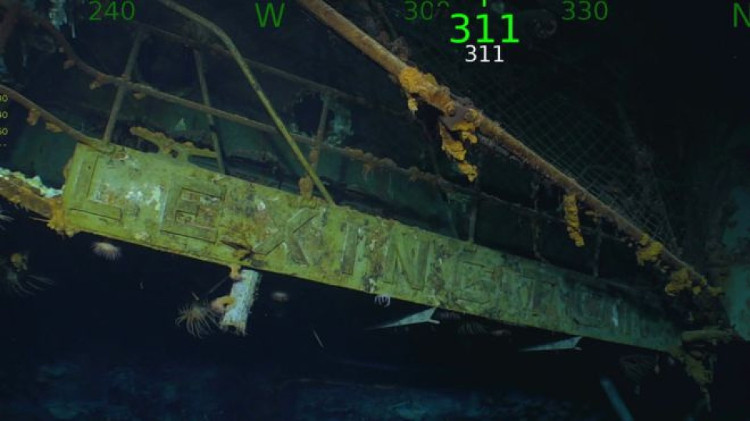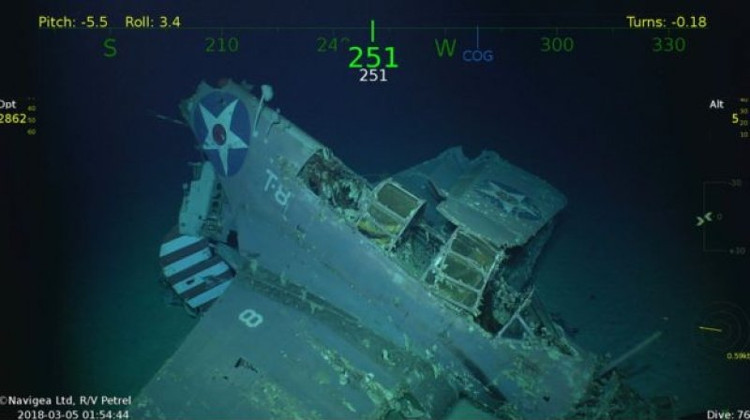Detecting the US carrier's body from World War II
USS Lexington, the US aircraft carrier sunk during World War II, has just been found off the coast of Australia.
The BBC (UK) on March 6 reported that USS Lexington was found at a depth of about 3km in the Coral Sea, about 800km from the east coast of Australia.
The ship sank during the Coral Sea battle - taking place from 4 to 8 May 1942. More than 200 American crew members were killed in this battle.
The US Navy confirmed USS Lexington was discovered by a search team led by Microsoft co-founder Paul Allen.

USS Lexington wreck. (Photo: Vulcan).

USS Lexington was sunk with 35 aircraft.(Photo: Vulcan).

The ship was almost intact. (Photo: Vulcan).

Anti-aircraft guns on ships.(Photo: Vulcan).
Allen's Vulcan also found 11 of the 35 aircraft aboard the USS Lexington. The images showed that the wreck was not much damaged.
Commander of the US Pacific Command, Admiral Harry Harris, said March 6: "As a son of a survivor aboard the USS Lexington, I send my congratulations to Mr. Paul Allen and the detective team. Danger has found "Lady Lex" ".
The Battle of the Coral Sea is seen as a key moment in preventing the advance of Japanese Pacific forces during the Second World War.
USS Lexington was sunk by USS Phelps after she was hit by a Japanese torpedo and bomb on May 8, 1942, to avoid falling into enemy hands.
According to the US Navy, 216 crew members on board were killed after the attack and more than 2,000 others were rescued.
Vulcan Robert Kraft spokesman, said: "USS Lexington is on our priority list because it is one of the ships lost in World War II." Mr. Kraft said it took 6 months to plan the ship's location.
Last year, Vulcan Company also discovered the wreck of USS Indianapolis in July 1945.
The company also found a number of other ships including Musashi (Japan) and Artigliere (Italian navy).
- Where is China's carrier versus the world?
- The smallest propeller in the world
- Seamless water battleship does not rival the US Navy
- How will things change when submarines become underwater carriers?
- Detecting strange diseases from bugs carrying viruses in China
- Surface of the missile 'blows' the world's strongest warship
- Detecting structure in the body against cancer is better than traditional chemotherapy
- Detecting the frightening relationship between belly fat and cancer
- WiMax and LTE bring 4G generation network sooner
- The world aims for 4 billion personal communication channels
- Detecting cells with age equal to the age of the body
- Why do tattoo carriers rarely suffer from seasonal diseases?
 'Fine laughs' - Scary and painful torture in ancient times
'Fine laughs' - Scary and painful torture in ancient times The sequence of numbers 142857 of the Egyptian pyramids is known as the strangest number in the world - Why?
The sequence of numbers 142857 of the Egyptian pyramids is known as the strangest number in the world - Why? History of the iron
History of the iron What is alum?
What is alum?